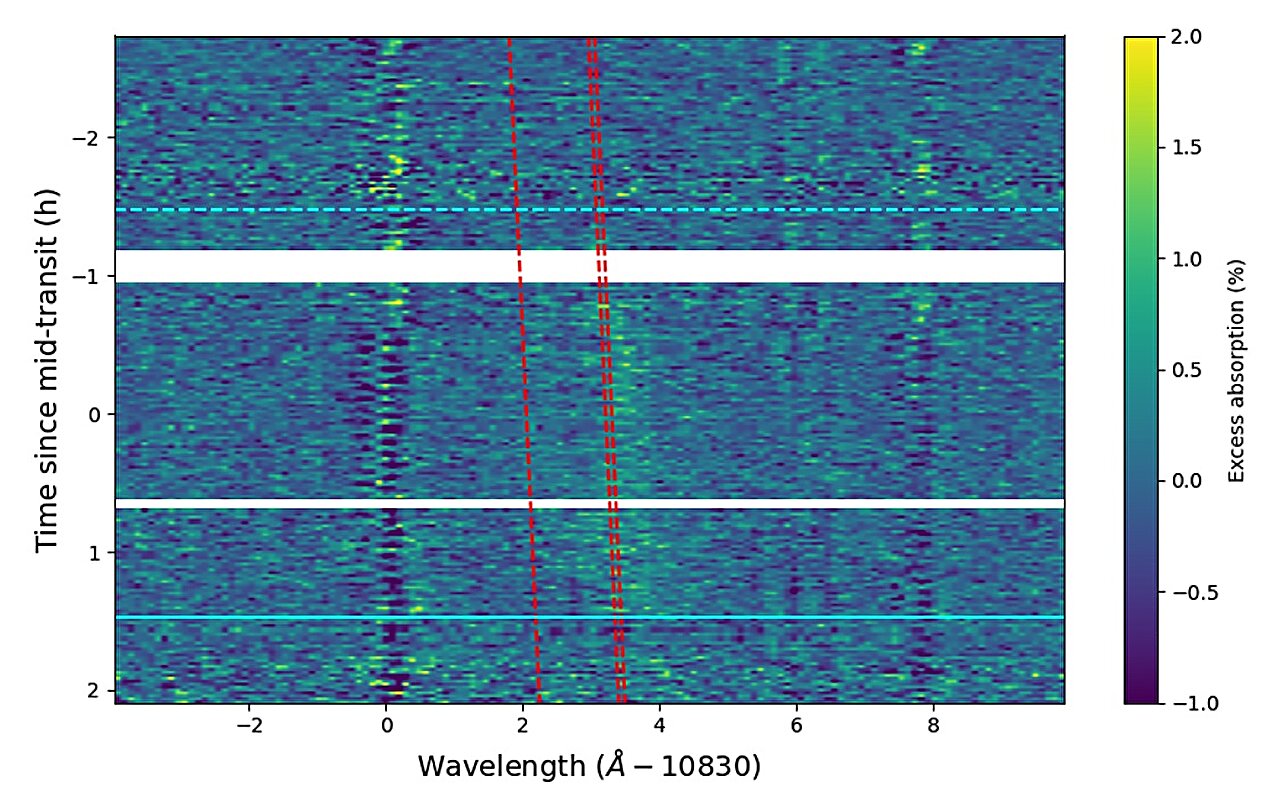Exciting news from the world of astronomy! Astronomers from the University of Chicago and beyond have made a groundbreaking discovery. They have detected an outflowing helium from the atmosphere of a nearby mini-Neptune exoplanet called TOI-2134 b. This incredible finding was detailed in a research paper published on August 3 on the pre-print server arXiv.
Atmospheric escape is a fascinating process that occurs when gas from a planet’s atmosphere escapes into space. This process has a significant impact on the properties of exoplanets. Observations have shown that atmospheric escape happens in various exoplanet systems, ranging from hot Jupiters to smaller super-Earths and mini-Neptunes. However, it is the lower mass planets where atmospheric escape truly drives and controls their evolution.
Exoplanets with substantial hydrogen/helium atmospheres undergo a process called hydrodynamic atmospheric escape. This mechanism leads to the escape of heavier atoms from a planetary atmosphere through collisions with lighter atoms. The extreme irradiation levels in these atmospheres play a crucial role in this process.
In a remarkable discovery, a team of astronomers led by Michael Zhang has detected the atmospheric escape of helium from TOI-2134 b, a mini-Neptune located approximately 73.8 light years away from Earth. This discovery was made using the Near Infrared Spectrometer (NIRSPEC) mounted on the Keck II Telescope in Hawaii.
“In this paper, we present the first detection of escaping helium from TOI-2134 b, a warm mini-Neptune orbiting a nearby (23 pc) X-ray-quiet K dwarf,” the researchers wrote.
The observations revealed that TOI-2134 b has the smallest helium signal among the exoplanets with detected helium, with an equivalent width of only 3.3 mÅ. The absorption spectrum showed a peak value of 0.37% at a redshift of 7 km/s, along with a secondary peak at a redshift of 10 km/s and a peak absorption of 0.13%.
The study also found a strong correlation between the energy-limited mass loss rate and the observationally inferred mass loss rate in TOI-2134 b. Additionally, TOI-2134 b experiences the lowest extreme ultraviolet (XUV) flux among the known exoplanets with helium in their atmospheres.
Based on their analysis, the astronomers concluded that the atmospheric escape of helium in TOI-2134 b is most likely due to photoevaporation by stellar XUV, rather than the core-powered mass loss mechanism. The results also suggest a mass loss timescale in the order of billions of years.
The researchers are now encouraging further observations of TOI-2134 b and other mini-Neptunes with helium outflows, particularly those orbiting mature stars. They believe that such studies will provide valuable insights into the nature of atmospheric escape in alien worlds.








